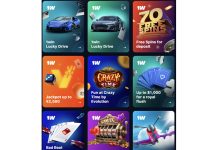Your resume is one of the most important documents over the course of your career journey.
It’s not an overstatement to say that it can make or break your plans of gainful employment in a fulfilling career. It gets scarier when you consider that recruiters typically skim through resumes for only 7 seconds before moving on.
What can you do when you have mere seconds to grab a recruiter’s attention and make them want to keep reading your resume? You need to ensure that your resume is engaging from beginning to end.
Here are 5 tips to help you do that!
1. Target your headline and summary to the job
“A professional resume will have a targeted headline and summary tailored to a role or job description. By tailoring the resume to the job you are targeting, you are indicating to the reader that you have the specific skills and experience they are seeking. Think about it this way – hiring managers have a specific need. Job seekers need to communicate that they are the best fit for that need.”
Your resume headline and summary are one of the first things a recruiter will see when perusing your resume.
Since you have just a few seconds to gain the recruiter’s attention, you’ll need to make the headline and summary both compelling and relevant to the job.
Here’s a tip:
When writing your headline and summary, study the job description and note down keywords specific to the job or role.
Afterwards, without overdoing it, modify the skills and experiences in your headline and summary to match said keywords.
This indicates to the recruiter that you have the specific skills and experiences that they’re looking for.
2. Include measurable accomplishments
“Include measurable accomplishments to set you apart from other candidates. These could be numbers/metrics, special projects, process improvements, or new system or process implementations. The key is to use valuable, engaging content that stands out to recruiters and hiring managers.”
Employers love applicants with accomplishments. But they love those with measurable accomplishments even more.
Instead of just listing what achieved, whenever possible, use indicators to quantify them. These indicators could be numbers, statistics, results, and more.
So, instead of saying, “implemented new policies,” try, “increased net profit by 17% through the introduction of cost control initiatives and automated systems.”
Keep in mind that although you need to use metrics to show value, you do not want to exaggerate or use false information, as this can work against you.
3. Highlight non-employment related accomplishments
“Highlight accomplishments outside of your normal scope of work. These could be committee service, volunteer work, or community engagement activities that demonstrate leadership and transferable skills. … If you led a team on a volunteer fundraising project or served as a committee leader, mention it. That experience can be used to demonstrate you are ready to lead a team in your next role.”
Non-work accomplishments are proof of your versatility. They show a potential employer that you are a well-rounded employee who can take initiative and take charge on a project or provide leadership to a team.
This is why your resume should contain accomplishments and experiences you gained outside your place of work.
Any volunteer work you did will look good on your resume. The same goes for any community projects you spearheaded, or any group/club you managed.
These experiences help show recruiters you have necessary leadership skills.
4. Use a professional resume format
“Formatting matters. The wrong format can cost job seekers the professional positions they desire. A format that works well includes placing pertinent information in this order: Title, Summary Paragraph, and Core Competencies followed by Professional Experience and Selected Achievements, and lastly your Education, Certifications, and other professional credentials.”
Your resume format is the order in which a recruiter will see your information.
That’s why it’s important to choose the right format for your resume.
There are two major types of resume formats; chronological and functional.
A chronological resume highlights your experience before your skills. The functional resume highlights your skills before your experience.
We recommend using the functional resume format to not only showcase your skills before your experience, but to also place more emphasis on them.
Alternatively, you can place equal focus on your skills and experiences by using a third format: a combination or hybrid-resume.
Here, equal focus is put on your skills and experiences, but your skills are presented first.
5. Align your content and design with your brand
“Let your professional brand show in your content and resume design. Choose industry appropriate brand colors that reflect your personality and weave those throughout the resume. … Most importantly, use words that align with your brand. … Use strong verbs for results-driven professions like sales vs. humanistic, values-based descriptors for collaborative leaders in the social sciences spaces.”
Job searching is all about marketing. If you want to get your foot in the door, you’ll need to sell yourself well.
That means using industry-appropriate colors on your resume and choosing resume design elements that fit with your industry.
Additionally, you’ll want to include brand-specific words on your resume.
In short, your resume should reflect your personality, brand, and industry.
If your work focuses on results, use strong, result-oriented verbs. If your profession focuses on value, look instead for relevant value-based words.
Summary
Don’t be overwhelmed at the prospect of crafting your resume.
It is possible to create a professional resume that causes recruiters to read beyond those initial seven seconds.
As a quick review:
- Target your headline and summary to the job you’re applying for
- Include measurable accomplishments
- Make note of non-employment accomplishments
- Work with a professional resume format
- Align your content and design with your brand and industry
These steps will help you as you create the most important document in your career journey.
Disclaimer: This article contains sponsored marketing content. It is intended for promotional purposes and should not be considered as an endorsement or recommendation by our website. Readers are encouraged to conduct their own research and exercise their own judgment before making any decisions based on the information provided in this article.



































